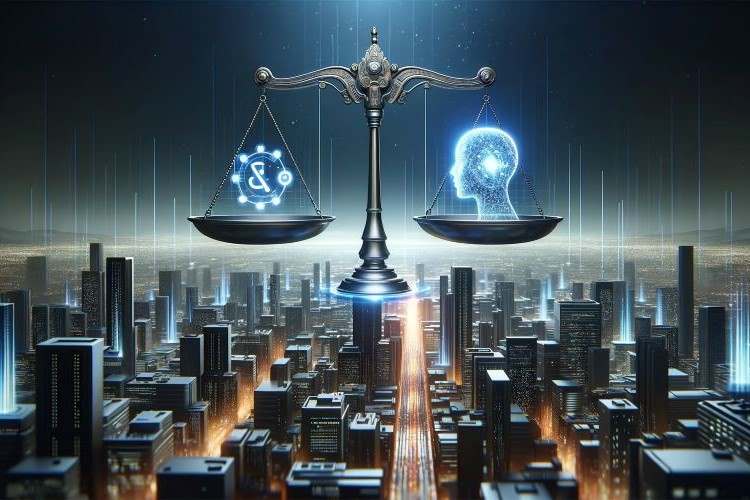
The European Union has just pulled off something akin to landing a spacecraft on a swiftly moving comet. With the passage of its AI Act, the EU is not just playing catch-up; it is trying to set the course. This bold gambit signals a profound shift in the governance of AI technologies. The legislation, unparalleled in its scope and ambition, seeks to draw a fine line between fostering technological innovation and ensuring the ethical use of AI. Let us try to understand the implications of the AI Act, its broader implications, and the challenges it seeks to address in a rapidly evolving space.
Central to the EU’s AI Act is a risk-based classification that categorises AI applications across a spectrum from unacceptable to minimal risk. This approach recognises that not all AI technologies are created equal, necessitating different levels of regulatory scrutiny.
READ I Digital Competition Bill: Big Tech see red over ex-ante regulation
The AI Act explained
The legislation takes a firm stance against AI practices deemed to pose unacceptable risks such as social scoring and manipulative AI. It intricately outlines the criteria for high-risk AI systems, focusing on applications with significant implications for individual rights and societal values including employment, law enforcement, and critical infrastructure. These systems are subject to rigorous requirements, from data governance to transparency measures, ensuring they are developed and used responsibly.
The Act pioneers in regulating generative AI technologies such as large language models. It mandates transparency and copyright compliance for foundation models, acknowledging their potential to reshape content creation and dissemination. The debate around generative AI in the EU highlights the challenge of regulating such versatile technologies without stifling innovation. And then there’s generative AI, the likes of which power tools like ChatGPT. These AI systems have been thrust under the legislative spotlight.
One key challenge the EU will face is enforcing the AI Act across its member states. The Act relies on national authorities to oversee compliance, and the interpretation and application of the regulation could vary between countries. Additionally, ensuring consistent standardisation for high-risk AI systems across different sectors will be crucial. The EU will need to establish clear guidelines and collaborate with industry stakeholders to achieve this.
While the AI Act looks to foster trustworthy AI development, some concerns exist regarding its potential impact on innovation. Stringent regulations could stifle the growth of smaller companies and hinder rapid technological advancements in the field. The EU will need to strike a careful balance between safeguarding citizens and fostering a dynamic AI ecosystem.
The Act is a significant step forward, but it is likely just the beginning of a continuous process. As AI technology continues to evolve, the Act will need to adapt to address new challenges and opportunities. The EU should establish mechanisms for ongoing review and revisions to ensure the legal framework remains relevant and effective.
The legislation strives for a delicate balance between promoting AI innovation and mitigating its risks. It reflects a pragmatic acknowledgment that the promise of AI comes with potential pitfalls, from privacy breaches to biased decision-making. By implementing a structured regulatory framework, the EU aspires to cultivate a trustworthy AI ecosystem that encourages innovation while safeguarding fundamental rights.
Implementation timeline
The AI Act’s phased implementation strategy demonstrates a thoughtful approach to regulation, allowing entities to adapt to new requirements progressively. This timeline is crucial for ensuring that businesses, especially startups, can align their operations with the Act’s mandates without disrupting their growth trajectories.
The journey of the AI Act through the legislative process was marked by intense lobbying, highlighting the high stakes involved. Technology companies and civil society groups engaged in a tug-of-war over the Act’s provisions, each pushing for a version that best aligns with their interests. Despite these pressures, the EU has emerged with legislation that strives for a balanced compromise, embedding ethical guardrails into the fabric of AI development and deployment.
Global implications of the Act
The AI Act is more than just a regional regulation; it is a bellwether for global AI governance. By setting comprehensive standards for AI use, the EU challenges other geopolitical powers to consider the ethical dimensions of AI technologies. The Act’s international ramifications are significant, potentially influencing how global companies develop AI solutions and shaping the dialogue around AI ethics worldwide.
The law is a testament to the EU’s ambition to lead the global conversation on the ethical use of AI. It represents a significant leap towards establishing a framework that balances the innovative potential of AI with the need to protect individual rights and societal values. As the Act moves from legislation to implementation, its success will hinge on the collective effort of lawmakers, technology developers, and civil society.
In embracing this pioneering role, the EU not only sets a precedent for AI governance but also ignites a crucial debate on the future of technology and humanity. The AI Act is a clarion call for a future where technology serves the common good, guided by principles of fairness, transparency, and accountability. As the world stands on the brink of a new era in AI, the EU’s AI Act lights the way forward, offering a blueprint for a world where innovation and ethics go hand in hand.
